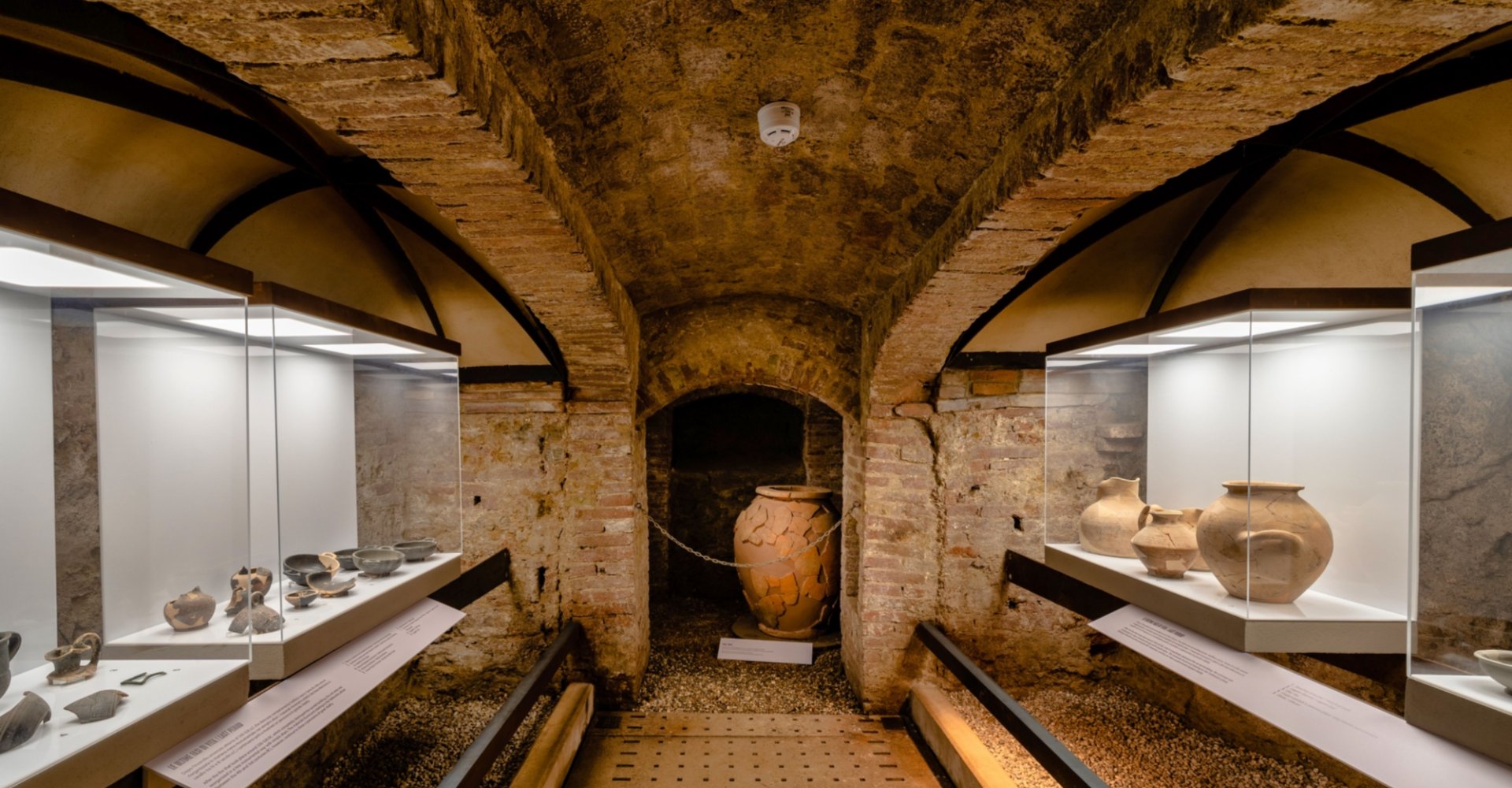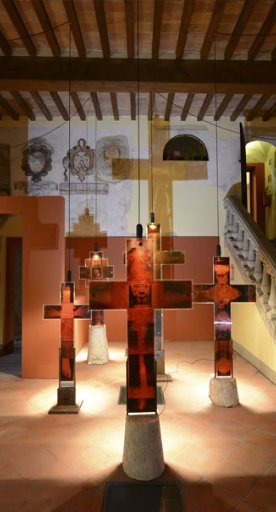
Archaeological Museum in Peccioli
Discovering the artefacts unearthed at the Etruscan site of Ortaglia and in the Archaeological area of Santa Mustiola
The Archaeological Museum in Peccioli houses the finds discovered within the municipal area, especially in the Etruscan site of Ortaglia and in the Archaeological area of Santa Mustiola, which preserves traces of settlements from the Roman and Langobard ages and a small medieval church with a cemetery.
The building in which the museum is located has ancient origins, developing in what were once the cellars of the castle of Peccioli, that is underground rooms that could date back to the Etruscan age.
Etruscan section
The site of Ortaglia, a few kilometers east of Peccioli, has preserved the traces of a sanctuary complex, whose remains of extremely high artistic value place it among the most important centres in the area between the 6th and 3rd centuries BC. The votive materials, the objects related to liturgical rites but above all the Attic ceramics that were imported from Greece show an economic and social vitality of the complex. A precious red-figure Attic kylix stands out in the collection, probably attributable to the famous Greek painter Makron, who worked in Athens around 490-480 BC.
The presence of Etruscan settlements in the area is also testified by the funerary equipment from a Hellenistic tomb found fortuitously in Legoli.
Roman, lateantique e medieval section
On the other hand, the Archaeological area of Santa Mustiola has provided important data on the Roman age population that between the 1st and 3rd century AD made this site a very thriving commercial transit point.
The remains of the Roman settlement were then exploited by the Langobards who in the 7th century AD headed from Lucca to the conquest of Volterra.
And finally, from the year 1000 on the top of the hill a small church was built, and around it a cemetery. Here tombs with funerary objects of considerable artistic value were found, which tell the story of the aristocracies that had economic and political interests in this area between the 12th and 15th centuries.
Among the various objects, the Belt of Isadora stands out, a precious completely restored bronze artifact that encircled the hips of a young girl who died in the mid-14th century but whose story has come down to us.
